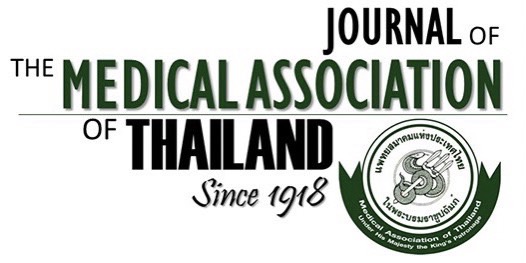Chewing of Betel Quid: Why Do Health Careproviders in Thimphu, Bhutan, Do it?
Nidup Dorji BSc, MPH*, Oranut Pacheun MSc, DrPH**, Chaweewon Boonshuyar MSPH**
Affiliation : * Royal Institute of Health Sciences, Royal University of Bhutan, Thimphu, Bhutan ** Faculty of Public Health, Mahidol University, Bangkok, Thailand
Objective : This cross-sectional study aimed to determine the prevalence of betel quid chewing and related factors including
general characteristics, behavioral pattern, perception and social influences among health care providers in Thimphu,
Bhutan.
Material and Method: A self-administered questionnaire was handed to 478 health care providers working in different units
of health care centers in Thimphu during June-July 2010. A total of 391 (81.8%) questionnaires were returned. Chi-square
test and multiple logistic regression were applied.
Results : The prevalence of current betel quid chewers among this group was 26.6%. Males chewed betel quid more than
females (29.5%, 23.9% respectively). Forty-two percent of current chewers had no specific reasons for chewing betel quid,
although 18.2% declared that they were addicted. Both friends and family members were key persons involved in influencing
betel quid chewing. Marital status was significantly associated with betel quid chewing, married health care providers being
2 times more likely to chew betel quid (OR = 2.09, 95% CI = 1.02-4.28) than those of single marital status. Similarly, those
coming from West Bhutan, were 2 times more likely to be currently using betel quid (OR = 2.71, 95% CI = 1.32-5.55) than
other regions. Health care providers from families with more than half of their members chewing betel quid were 14 times
more likely to be currently chewing it (OR = 14.52, 95% CI = 6.02-35.04) than families having none of their members
chewing it. Health care smokers were more likely to chew betel quid than non-smoking ones (p-value = 0.012). Also
occasional drinkers were 3 times more likely to be currently using betel quid (OR = 3.52, 95% CI = 1.78-6.96). Those who
perceived a high barrier to quit chewing were about 2.6 times more likely to be current chewers of betel quid, than those who
perceived less of a barrier to quit (OR = 2.62, 95% CI = 1.21-5.67).
Conclusion : The present study revealed betel quid chewing prevalence rate of 26.6%. Of the various factors considered
under study, marital status, region of origin, family members chewing betel quid, status of smoking and drinking were
statistically proven significant.
Keywords : Betel quid chewing, Health care providers, Thimphu



